The new ACR/EULAR antiphospholipid syndrome (APS) classification criteria incorporate several novel clinical features, including risk stratification of macrovascular events, well-defined microvascular domain items, re-defined pregnancy morbidity definitions, cardiac valve disease, and thrombocytopenia.

During The Future of Antiphospholipid Syndrome (APS): 2023 ACR/EULAR APS Classification Criteria and Beyond, Doruk Erkan, MD, MPH, Professor at Weill Cornell Medicine, discussed the current APS classification criteria, and Jason S. Knight, MD, PhD, Professor at the University of Michigan, discussed approaches being investigated to classify APS in the future.
The session is available on demand for registered ACR Convergence 2023 participants through October 31, 2024, on the meeting website.
“Now we have a highly specific classification system for research purposes,” Dr. Erkan said. “Sub-phenotyping APS, beyond antiphospholipid (aPL) profile and different clinical phenotypes, is critical to understand APS better.”
APS classification entry criteria from ACR/EULAR include at least one documented clinical domain criterion plus a positive aPL test within three years, Dr. Erkan explained. A patient can be classified as having APS if there are at least three points from both the clinical domains and laboratory domains.
Clinical domains
- Macrovascular: venous thromboembolism (VTE)
- High-risk VTE profile = 1
- Without high-risk VTE profile = 3
- Macrovascular: arterial thrombosis (AT)
- High-risk CVD profile = 2
- Without high-risk CVD profile = 4
- Microvascular
- Suspected = 2
- Established = 5
- Obstetric
- Three or more consecutive pre-fetal and/or early fetal deaths = 1
- Fetal death in the absence of preeclampsia (PEC) or placental insufficiency (PI) with severe features = 3
- PE or PI (either with severe features) with/without fetal death = 3
- PEC and PI (both with severe features) with/without fetal death = 4
- Cardiac valve
- Thickening = 2
- Vegetation = 4
- Hematology
- Thrombocytopenia = 2
Laboratory criteria
- Patient with a single positive lupus anticoagulant test = 1
- Patient with persistently positive tests = 5
Laboratory domains
- Patient with moderate or high positive IgM anti-cardiolipin antibody (aCL) and/or anti-β2-glycoprotein-I antibody (aβ2GPI) = 1
- Moderate positive IgG aCL and/or aβ2GPI = 4
- High positive IgG aCL or aβ2GPI = 5
- High positive IgG aCL and aβ2GPI = 7

Investigation is ongoing into multiple different approaches to classifying APS, including the use of after-diagnosis antibodies, Dr. Knight said. Other autoimmune diseases use myriad auto-antibodies for sub-phenotyping. It is necessary to understand the complete auto-antigen milieu to follow this approach in APS, he explained. One antibody class being studied for APS is anti-PS/PT antibodies; however, there is a need for more studies that characterize anti-PS/PT antibodies in parallel to aβ2GPI.
The second approach discussed was small vessels.
“Microvascular APS is something we all need to be thinking about, but still, I think that umbrella is not specific enough to pull out all of the endotypes underneath it. So, ideally, we will find biomarkers,” Dr. Knight said.
Omics also has potential for use in APS classification. Clinical cluster analyses offer a way to explore the heterogeneity among patients with APS, Dr. Knight said. Three similar clusters have been found across multiple studies, including older males with cardiovascular risk factors, younger females with SLE, and asymptomatic auto-antibody carriers. Research suggests that people of East Asian descent may be at higher risk for the condition. Another study found that patients did not cluster by triple-positivity, lupus diagnosis, or other obvious high-level features.
A fourth classification approach that may be on the horizon involves enhancing the positive function of B cells. Studies are investigating the possibility of curing APS through the elimination of auto-antibodies, Dr. Knight said. One ongoing trial is evaluating the use of anti-CD38 for plasma cell depletion in APS.
Dr. Knight said ongoing clinical trials may provide clues about which patients with APS will most likely benefit from which B cell maturation approaches.
“We need high-quality research to better define APS and its management,” Dr. Erkan said.
Register Today for ACR Convergence 2025

If you haven’t registered for ACR Convergence 2025, register today to participate in this year’s premier rheumatology experience, October 24–29 in Chicago. All registered participants receive on-demand access to scientific sessions after the meeting through October 31, 2026.
